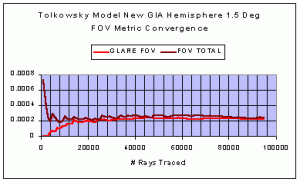strmrdr
Super_Ideal_Rock
- Joined
- Nov 1, 2003
- Messages
- 23,295
They are optical measuring devices which can be a good thing or bad.Date: 10/29/2004 10:44:37 AM
Author: Diermint
Date: 10/29/2004 9:39:39 AM
Author: strmrdr
.2 degrees is the accuracy of the more common diamond scanners in use.
HCA, AGA, AGS or anything else based on the measurements is going to have that margin of error.
There are some better tools available or soon to be available but there will always be a margin of error it is just huge right now.
That''s interesting Strmrdr, thanks, I had just assumed they would be measured more accurately than that but I hadn''t ever looked into it before. Do you know offhand what the error in measuring the dimensions is - ie. they seem to be often quoted to the nearest 0.1mm - is that a limitation in the measurement or has it to do with the variability in the stone?
Without getting to technical the resolution of the optical sensor, how well the optics work in getting the information to the sensors. and how well the software deals with the data determine the base accuracy.
The new scanners claim higher resolution sensors, better optics, and claim better software results.
One you get beyond talking about the base or machine accuracy you get into real world accuracy.
Optical measuring devices lost favor in industry after being the next big thing for a while because of the problem of keeping them clean.
They do not deal with dust, dirt or oil very well at all.
They are also hard to calibrate and that is where you get the biggest difference between the results from 2 scanners even if the base accuracy is the same.
Just an fyi a logitec 4000 CCD web cam has better resolution than the sensors used in even the newer scanners. But doesn''t have the level of noise filtering.
If I was going to design one I start with a 10 megapixel sensor. :}
ssssshhhh I know they have too bad a noise problem for that use yet. Which is why the lower resulution CCD sensors are used.








300x240.png)